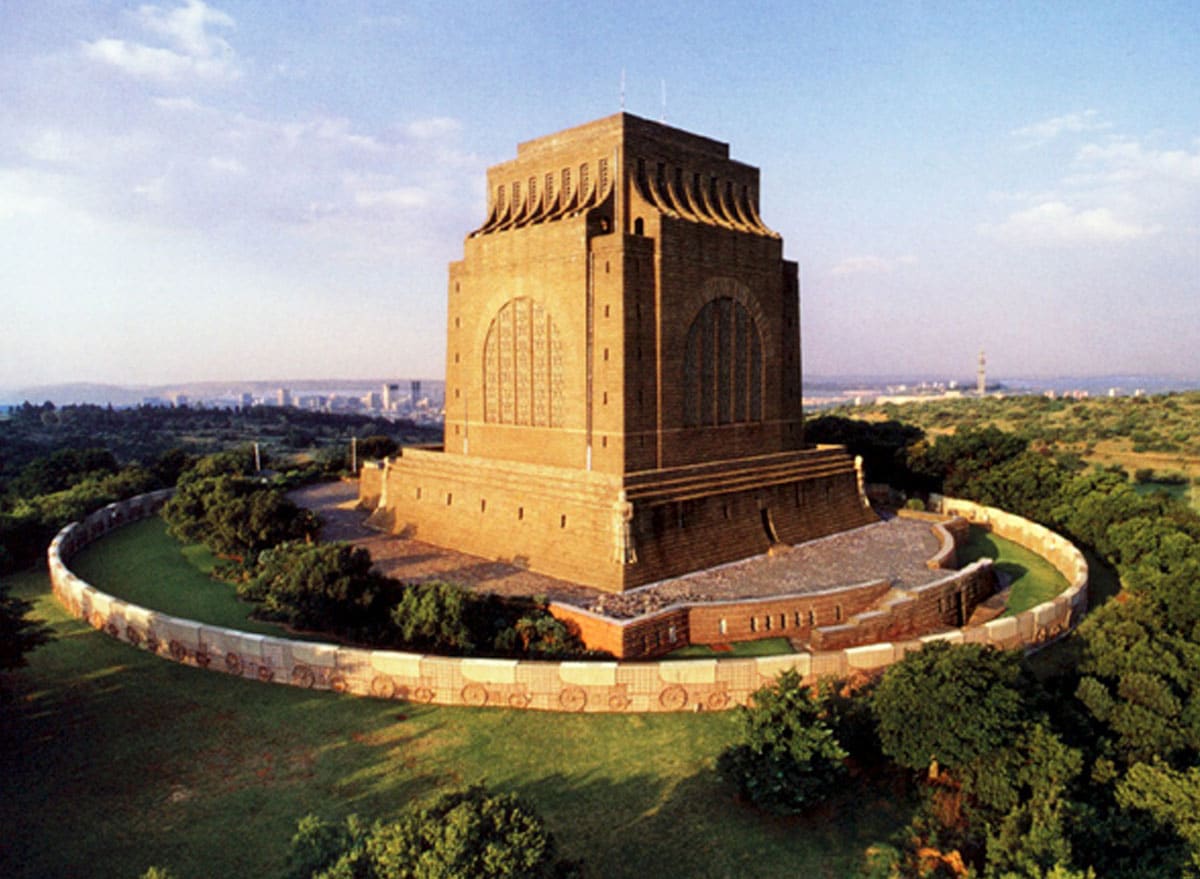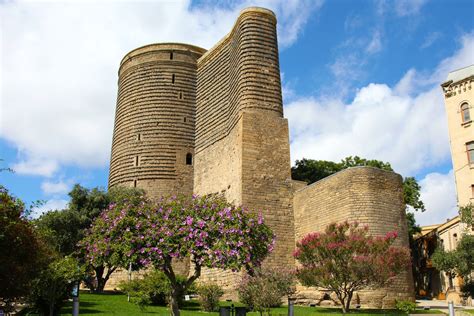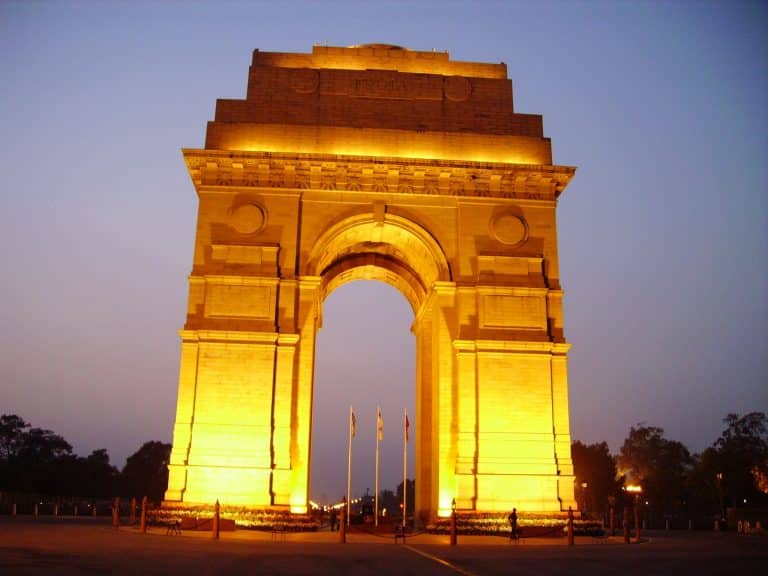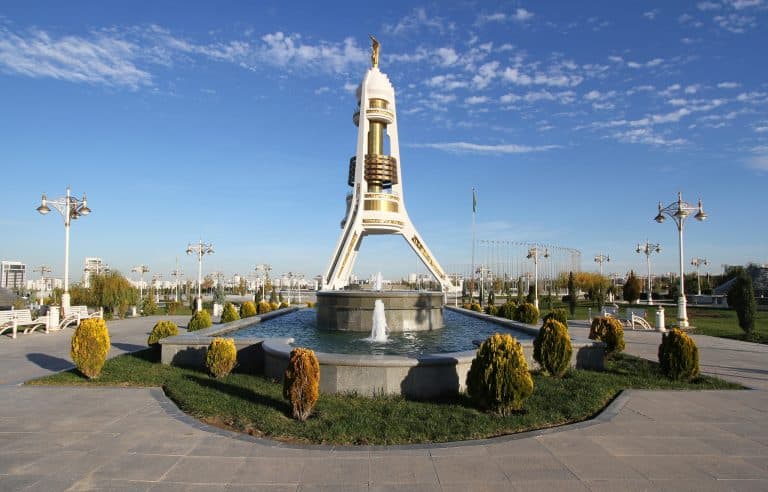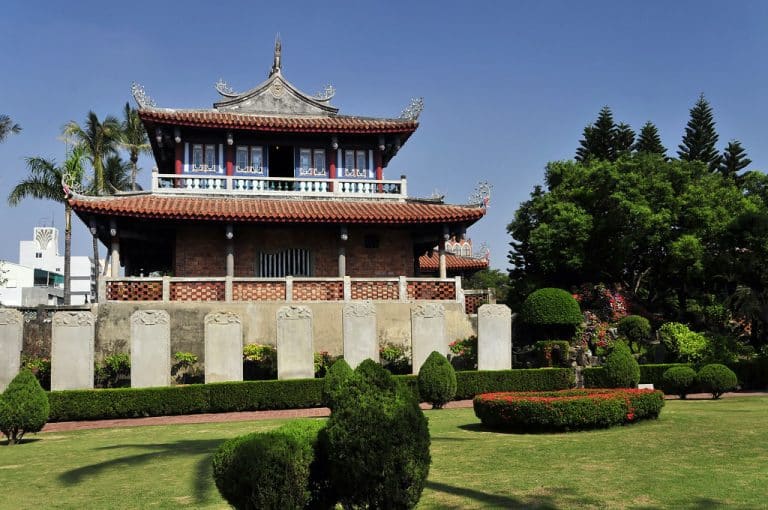Sub-Saharan Africa
After my excursions in the Caribbean, I then headed to Sub-Saharan Africa to learn more about the region’s history and culture.
Site 1: My first stop in Sub-Saharan Africa was the Voortrekker Monument in Pretoria, South Africa. The monument was built in remembrance of the Voortrekkers (Boer pioneers) who abandoned Cape Colony between 1835 and 1854. The monument began to be constructed on July 13th, 1937. It was inaugurated by South Africa’s then prime minister, D.F. Malan, on December 16, 1949. As I approached the monument, I noticed that each of the outside four corners were surrounded by four statues of Voortrekker leaders: Piet Relief, Andries Pretorious, Hendrik Potgieter, and an unknown leader representing all other leaders of the Voortrekkers. I saw that the monument was made of granite, and noticed it was quite tall, reaching 80 meters (262.47 feet) high. I also observed the wall surrounding the monument, featuring a procession of wagons. My favorite aspect about the building’s exterior was the four rectangle panels. They were filled with arched windows, which were filled with a pattern of triangles connecting into stars. When I entered inside the building, I first went to the cenotaph room. In the center was a stone cenotaph (an empty tomb that honors a person or group of people). I also liked the elaborate tapestry on one of the room’s walls featuring the women who underwent the great trek. It features 15 separate panels. I admired the frieze bordering the great domed hall. It featured 27 scenes depicting the Voortrekker’s great trek. Only four artists designed it. I observed the yellow arched windows that were on top of each side of the frieze. I climbed up the spiral staircase in the corner and went to the top floor of the monument. When I looked down, I could see a lower level, with the stone cenotaph at the very center. There was a four-foot-high concrete wall that enacted as a barrier between the top floor and the descent below. This monument gives visitors a glimpse into the History of South Africa, making it an important site to visit.
Here is the exterior of the monument:
Here is the cenotaph room:
Here is the main hall:
Here is the top floor of the Voortrekker Monument:
Site 2: My second destination was Bet Medhane Alem (also known as “House of the Redeemer of the World”) in Lalibela, Ethiopia. The church is located in a site of eleven churches that were constructed by Gebre Mesqel, who was Ethiopia’s emperor from 1162 to 1221. The churches are divided into three groups: The northern group (which is where this church is located), the western group, and the eastern group. It is the largest church out of all eleven at this site. I was stunned by its size. It is 37’8” tall, and 8, 610 square feet. It is the largest rock-hewn church on earth. I also noticed that the church was shaped like a cross. It has a reddish-brown tint, and is carved from a single block of stone. I admired its geometric windows vertically positioned on its eastern wall. I saw there was a pattern of a Maltese cross inside a square, a semi-circle, a Latin cross, and a square window on the top. I particularly liked the church’s gabled roof. I was pleased with its simple, plain interior. There are pillars that support beautiful stone archways, and the stone floor is covered with elaborate carpets. This church has been an important religious site for many years and still holds Sunday surfaces. It also gives visitors a glimpse into part of Ethiopia’s history.
Here is a picture of the interior of Bet Medhane Alem:
Here is the exterior of Bet Methane Alem:
